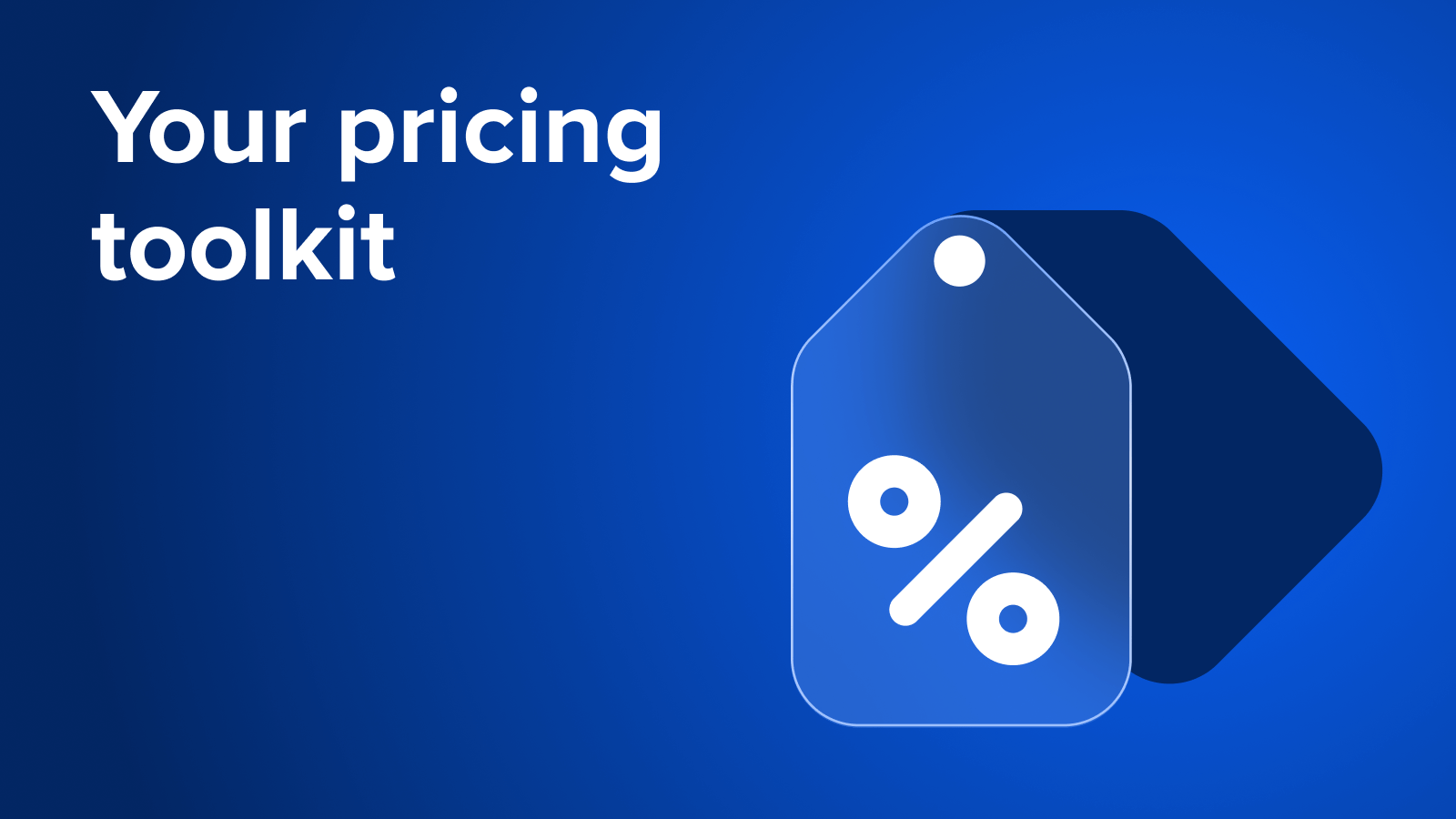Indoor Playground Business Plans: How to Start and Grow a Profitable Play Center

Opening or expanding an indoor playground or play center is an exciting venture, but success hinges on careful planning. A well-structured business plan not only guides your journey but also attracts investors. From securing the right location to optimizing operations, every detail plays a role in ensuring long-term profitability.
One essential factor to consider is investing in playground software to streamline bookings, manage memberships, and enhance the overall guest experience. A reliable system can help automate operations, improve efficiency, and provide valuable data insights—key elements for building a sustainable and scalable business.
In this comprehensive guide, we'll delve into the ten crucial elements you must include in your indoor playground business plan. Whether you're an aspiring entrepreneur or seeking investment, these key components will set you on the path to operational excellence, revenue growth, and unparalleled guest satisfaction.
1. Indoor playground market analysis and opportunity assessment
Before laying the foundation for your indoor playground, conduct a thorough market analysis. Explore the demand for indoor play spaces in your target location. Identify competitors, analyze their strengths and weaknesses, and discern market trends. This section should provide a clear snapshot of your playground's potential within the existing market.
Actionable steps:
- Identify target location demographics: Conduct in-depth demographic research to understand the age groups, income levels, and family structures in your target area.
- Competitor SWOT analysis: Perform a thorough SWOT analysis (Strengths, Weaknesses, Opportunities, Threats) for each competitor to identify market gaps and potential areas of differentiation.
- Trendspotting: Explore emerging trends in indoor play spaces, from technology integration to themed experiences. Consider how these trends align with your vision.
- Local partnerships: Research potential partnerships with local businesses, schools, or community organizations to strengthen your market presence.
2. Unique selling proposition (USP): Setting your indoor playground apart
Define what makes your indoor playground unique. Is it innovative attractions, themed zones, or exceptional services? A compelling USP not only attracts guests but also entices investors. Clearly articulate what sets your playground apart and why families will choose it over competitors.
Actionable steps:
- Themed zones and attractions: Develop detailed plans for unique themed zones and attractions within your indoor playground, ensuring they align with your target audience's interests.
- Exceptional services: Outline innovative services, such as personalized birthday packages, VIP memberships, or educational programs, that set your playground apart.
- Interactive elements: Incorporate interactive elements such as augmented reality games, interactive floors, or smart wristbands to enhance the overall experience.
- Storytelling: Craft a compelling narrative around your playground's theme, creating an immersive experience that resonates with families.
Read this next: 5 Captivating Indoor Playground Design Ideas
3. Target audience: Tailoring experiences to families
Understanding your target audience is paramount. Outline the age groups, interests, and preferences of the families you aim to attract. Tailor your offerings to meet their needs, ensuring a memorable and enjoyable experience for both children and parents.
Actionable steps:
- Age-specific offerings: Develop age-specific play areas and activities to cater to the diverse needs of children, from toddlers to pre-teens.
- Parent-focused amenities: Integrate amenities like comfortable seating, Wi-Fi, and a cafe to cater to parents, ensuring a family-friendly environment.
- Feedback loops: Establish regular feedback mechanisms, such as surveys or focus groups, to understand the evolving preferences of your target audience.
- Community engagement: Actively engage with local communities through events, sponsorships, or school partnerships to build a loyal customer base.
4. Choosing a business structure for your indoor playground
Define your indoor playground's legal structure. Whether it's a sole proprietorship, partnership, LLC, or corporation, choose a structure that aligns with your business goals. Clearly outline ownership details, responsibilities, and organizational hierarchy.
Actionable steps:
- Legal consultation: Seek legal advice to determine the most suitable business structure, considering liability, taxation, and ownership considerations.
- Operating agreements: Draft comprehensive operating agreements, clearly defining roles, responsibilities, and profit-sharing structures for all stakeholders.
- Insurance planning: Research and secure comprehensive insurance coverage, including liability insurance and coverage for potential property damage or injuries.
- Financial management software: Implement robust financial management software to track expenses, revenue, and overall financial health.
5. Indoor playground startup costs and financial projections
Investors and entrepreneurs alike seek a clear picture of your playground's financial future. Provide detailed financial projections, including startup costs, operational expenses, and revenue forecasts. Demonstrate a path to profitability over the short and long term.
Actionable steps:
- Detailed startup budget: Break down startup costs into categories, including equipment purchase, interior design, marketing, and personnel.
- Revenue streams: Clearly define multiple revenue streams, such as admission fees, membership plans, and merchandise sales. Read next: How Elevate Generated $600,000 in Membership Revenue in 4 Months
- Conservative forecasting: Present conservative financial forecasts, considering potential challenges and market fluctuations.
- Investor ROI: Clearly articulate the return on investment (ROI) expected over different timeframes.
6. Safety and compliance
Safety is paramount in indoor playgrounds. Outline comprehensive safety protocols, risk management strategies, and compliance measures. Ensure your business plan reflects a commitment to creating a secure environment for children and peace of mind for parents.
Actionable steps:
- Safety protocols manual: Develop a comprehensive safety manual that outlines protocols for equipment maintenance, emergency procedures, and staff training.
- Regular inspections: Implement a routine inspection schedule for equipment, play areas, and facilities to ensure ongoing safety compliance.
- Certifications and licenses: Obtain all necessary certifications and licenses for operating an indoor playground, showcasing your commitment to safety.
- Emergency response plan: Clearly define and train staff on emergency response protocols, including evacuation procedures and communication plans.
Read this next: How to Manage Risk at Your Attractions Venue
7. How to market your indoor playground and attract families
Craft a robust marketing strategy to generate awareness and attract families to your indoor playground. Utilize a mix of online and offline channels, social media, influencer partnerships, and promotional events. Clearly outline how you plan to create a buzz around your opening and sustain customer engagement.
Actionable steps:
- Pre-launch campaign: Build anticipation with a pre-launch campaign, utilizing social media teasers, exclusive invites, and influencer partnerships.
- Opening events: Plan grand opening events with special promotions, discounts, and interactive activities to attract a large audience.
- Content marketing: Develop a content calendar for ongoing marketing efforts, including blog posts, videos, and social media content that showcases the playground's offerings.
- Loyalty programs: Implement loyalty programs or referral incentives to encourage repeat visits and word-of-mouth marketing.
8. Technology integration: Streamlining operations and enhancing experience
In the digital age, technology is a game-changer. Outline how you'll leverage indoor playground technology to streamline operations, enhance guest experience, and gather valuable data. From online booking systems to interactive attractions, showcase your commitment to staying at the forefront of technological advancements.
Actionable steps:
- Online booking system: Implement an efficient online booking system that allows guests to reserve play sessions, birthday parties, and special events. Your online booking system should be optimized to increase conversions and spend per head! Read next: How Ninja Warrior UK Achieved Over 3 Million Bookings In 4 Years
- RFID technology: Explore RFID technology for seamless access control, cashless transactions, and tracking visitor behavior for data-driven decision-making.
- Data analytics tools: Invest in data analytics tools to gather insights on customer preferences, peak hours, and popular attractions, optimizing operational efficiency.
- Mobile app development: Consider developing a mobile app that enhances the user experience, provides information, and offers exclusive promotions.
Read this next: Visitor Management Systems: What Are They & How to Choose One
9. Customer feedback and improvement: A continuous loop
Customer satisfaction is the heartbeat of any successful business. Detail how you plan to collect and analyze customer feedback regularly. Showcase your commitment to a continuous improvement loop, addressing concerns, and evolving to meet the ever-changing expectations of your guests.
Actionable steps:
- Real-time feedback systems: Implement real-time feedback systems, such as in-app surveys or touchscreen kiosks, or event ROLLER’s Guest Experience Score, to capture immediate customer sentiments. But remember, the questions you ask and how you deliver this feedback system can have a meaningful impact on response rates and your ability to make informed decisions. Read next: How Flying Squirrel Saves Time & Resources By Collecting Feedback
- Data analysis for improvement: Regularly analyze customer feedback data to identify trends, areas of improvement, and opportunities for enhancing the overall experience.
- Staff training programs: Conduct ongoing staff training programs based on customer feedback, ensuring a customer-centric approach at all levels.
- Public acknowledgment: Acknowledge and publicly address positive customer feedback, showcasing your commitment to excellence.
10. Partnership and expansion strategies: Scaling the success
For entrepreneurs eyeing expansion and investors seeking growth potential, outline strategic partnership and expansion plans. Whether it's franchising, collaborating with complementary businesses, or venturing into new locations, demonstrate a clear roadmap for scaling your indoor playground's success.
Actionable steps:
- Franchise model: If applicable, develop a comprehensive franchise model, including franchise fees, support systems, and guidelines for maintaining brand consistency.
- Market research for expansion: Conduct thorough market research when considering expansion, identifying locations with high potential and minimal competition.
- Collaborative ventures: Explore collaborative ventures with businesses that complement your indoor playgrounds, such as food and beverage partnerships or educational tie-ins.
- Agile business model: Design an agile business model that allows for scalability, ensuring your indoor playground can adapt to changing market dynamics.
How much does it cost to start an indoor playground?
The cost to start an indoor playground can vary widely depending on the size, location, and features of your venue. On average, you can expect to invest between $250,000 and $1 million for a mid-sized indoor playground, while larger facilities with advanced attractions and technology integrations may exceed $2 million.
Startup costs typically include:
- Lease or property purchase: Based on location, square footage, and renovations needed
- Play equipment and installations: Themed zones, toddler areas, slides, and climbing structures.
- Technology and software: Online booking systems, POS, and guest management tools.
- Staffing and training: Salaries, onboarding, and uniforms.
- Marketing and pre-launch promotions: Branding, website, ads, and launch events.
- Licensing, insurance, and legal fees: Including safety compliance and liability coverage.
Is starting an indoor playground business a good investment?
Starting an indoor playground business can be a profitable and rewarding investment—especially in areas with growing family populations and limited local attractions. The success of an indoor playground depends on several key factors including location, quality of offerings, marketing strategy, and operational efficiency.
Here’s why indoor playgrounds are often considered a strong investment:
- Recurring revenue streams: Income from ticket sales, memberships, food and beverage, birthday parties, and merchandise.
- Loyal guest base: Families often become repeat visitors, especially if your venue offers engaging activities and exceptional service.
- Strong ROI potential: Many venues reach profitability within 2–3 years, with profit margins ranging from 15% to 25% depending on scale and efficiency.
That said, profitability also depends on how well you manage costs, staff training, and customer experience. Investing in the right technology and gathering guest feedback can help you improve margins over time.
Indoor playground franchise vs. starting your own business
If you're considering launching an indoor playground, one of your first decisions will be whether to buy into a franchise or start your own independent business. Both options have advantages and trade-offs.
Franchising:
Pros:
- Built-in brand recognition and trust.
- Access to established business systems and training.
- Ongoing support for marketing and operations.
Cons:
- Higher upfront costs (franchise fees can range from $50,000 to $150,000+).
- Less control over branding and decision-making.
- Ongoing royalties or percentage-based fees.
Independent ownership:
Pros:
- Full creative and operational control.
- Lower initial costs and no franchise fees.
- Freedom to innovate and personalize your guest experience.
Cons:
- Greater responsibility for setup, training, marketing, and operations.
- Slower initial brand recognition and customer acquisition.
If you’re looking for structure and support, a franchise might be a safer bet. If you value flexibility and want to build your own brand from the ground up, independent ownership could offer greater long-term rewards.
What's next?
Crafting a robust indoor playground business plan is not just a formality; it's your roadmap to success. By incorporating these ten essential elements, you not only appeal to investors but also set the stage for operational efficiency, revenue growth, and guest satisfaction.
However, the journey doesn't end with a well-documented plan; it begins. As you embark on this exciting venture, consider how ROLLER can be your strategic partner in achieving these outcomes. From seamless ticketing to data analytics that drives operational efficiency, ROLLER empowers you to deliver a great guest experience.
Book a demo to see how ROLLER can help you grow your indoor playground business.
Frequently asked questions about starting an indoor playground business
Is an indoor playground business profitable?
How much does it cost to start an indoor playground?
Your indoor playground business plan should include a detailed startup budget covering expenses like leasehold improvements, play equipment, insurance, licensing, marketing, and technology setup. Factoring in these costs upfront can help you prepare for funding and avoid cash flow issues later.
What are the legal requirements for an indoor playground?
How do I write a business plan for an indoor playground?
To write a business plan for an indoor playground, include the following core components:
- Market analysis and competitor research
- Your unique selling proposition (USP)
- Defined target audience
- Business structure and ownership model
- Detailed financial projections
- Marketing and promotion strategy
- Safety and compliance measures
- Technology and software integration
- Guest feedback and continuous improvement strategy
- Partnership or expansion opportunities
How do I get funding for my indoor playground business?
What equipment is needed for an indoor playground?
- Climbing structures
- Slides
- Ball pits
- Obstacle courses
- Sensory play elements
- Foam flooring and padding
- Seating for parents and caregivers
- Check-in kiosks or access control systems
How do indoor playgrounds make money?
Related articles


What Every Venue Needs to Know About Birthday Parties (from a Parent and a Pro)

2025 Pulse Report Webinar: Operators Unpack the Guest Insights
Enhance your guest experience
Get free education, tips and inspiration to help you run a successful venue.